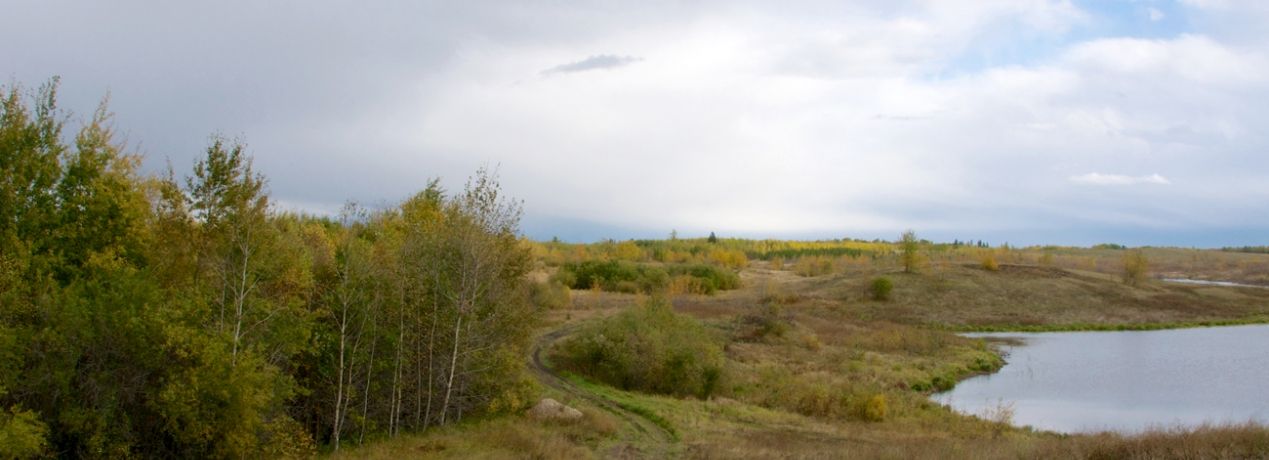This page summarizes our reclamation requirements for oil and gas sites in Alberta. Select a section below to learn more on:
- Upstream oil and gas site
- Sweet or sour gas plant
- Pipeline
Our reclamation requirements vary depending on the type of energy project or development. Learn more on our Reclamation page.
Upstream Oil and Gas Site
To reclaim a well, facility, or other upstream oil and gas development, companies are required to
- clean up subsurface contamination;
- return the land to how it looked and was used, or similarly, before development; and
- apply for a reclamation certificate from us.
Obtaining a Reclamation Certificate
Landowner consent is required to participate in the Government of Alberta’s Site Reduction Reclamation Certification Pilot program, announced in Bulletin 2024-05. The landowner consent form must be filled out and signed by the landowner and provided by the licensee as part of their application. General questions about the pilot can be directed to the government at @email or the AER at @email.
Our reclamation process and criteria for oil and gas sites includes general guidelines for reclaiming upstream oil and gas sites and for applying for a reclamation certificate.
Sweet or Sour Gas Plant
Companies that no longer need sweet gas plants for resource development must follow the reclamation requirements for upstream oil and gas sites above.
Companies that no longer need sour gas plants for resource development must apply for an amendment to their Environmental Protection and Enhancement Act (EPEA) approval for decommissioning and reclamation. The terms and conditions attached to this amendment approval will provide further site-specific requirements for decommissioning and reclamation.
Obtaining a Reclamation Certificate
When all of our reclamation requirements have been met, including achieving the approved reclamation outcome, companies can apply for a reclamation certificate. Learn why this certificate is needed on our Reclamation page.
Before applying for a reclamation certificate for a sour gas plant, companies should review our reclamation certificate application checklist for EPEA-approved activities and our list of frequently asked questions.
Sulphur Storage Facilities
Companies must apply for an EPEA approval to reclaim sulphur storage facilities that have
- storage capacity of greater than 100 tonnes,
- brine storage ponds greater than 5000 milligrams per litre of chlorides, or
- bulk petroleum storage facilities with storage capacity of at least 10 000 cubic metres.
Our reclamation requirements for sulphur storage facilities and for obtaining a reclamation certificate for these facilities follow the same process as sour gas plants above.
Pipeline
Companies that no longer need pipelines for resource development must follow the reclamation requirements for upstream oil and gas sites. However, companies will require an EPEA approval to reclaim a pipeline if
- the pipeline’s index is equal or greater than 2690 (length in kilometres multiplied by the outside diameter in millimetres); and
- the pipeline is located on private land or on Crown land in the White Area of the province (i.e., Class I pipelines).
A second EPEA approval is required to reclaim a Class I pipeline if the pipeline will be removed following abandonment. For more information, companies should review the terms and conditions of the EPEA approval and relevant regulatory policies (e.g., Land-Use Framework regional plans and 2010 wellsite criteria).
Under the terms and conditions of our Class I pipeline EPEA approval, companies must conduct postconstruction reclamation assessments (PCRAs). PCRA reports must be submitted to us, detailing the results of the assessment, any identified environmental issues, and proposed mitigation measures.
Obtaining a Reclamation Certificate
When all of our reclamation requirements have been met, including achieving the approved reclamation outcome, companies can apply for a reclamation certificate. Learn why this certificate is needed on our Reclamation page.
Our reclamation process and criteria for oil and gas sites includes general guidelines for reclaiming pipelines and applying for a reclamation certificate.


